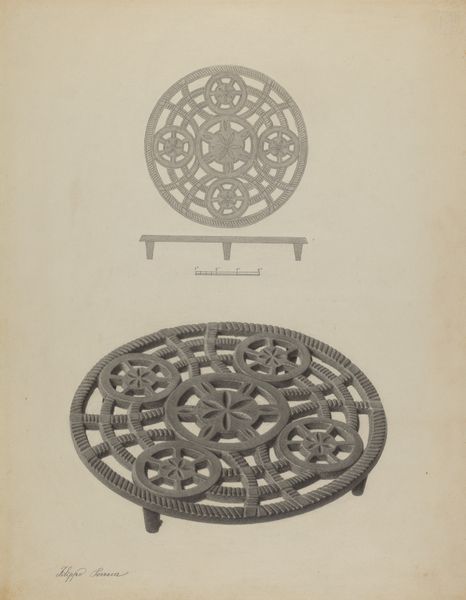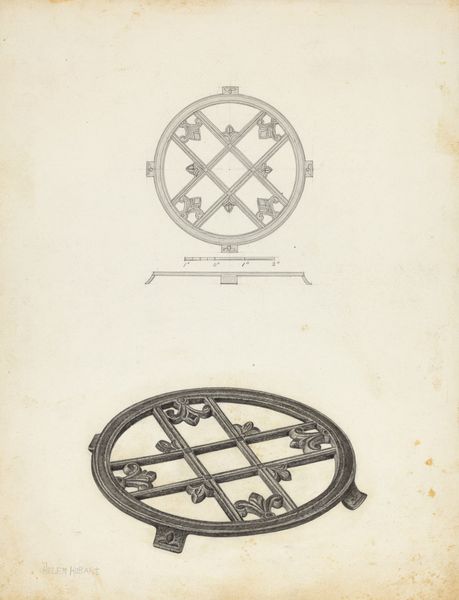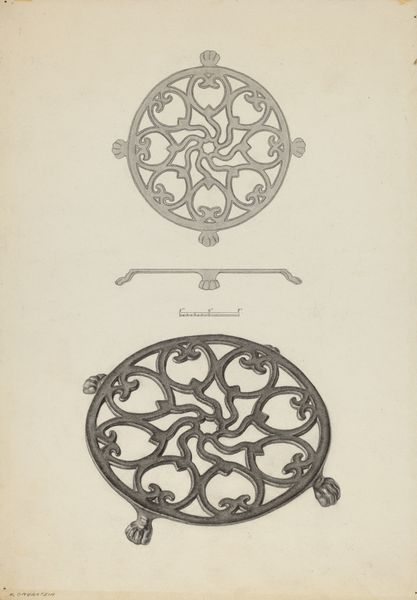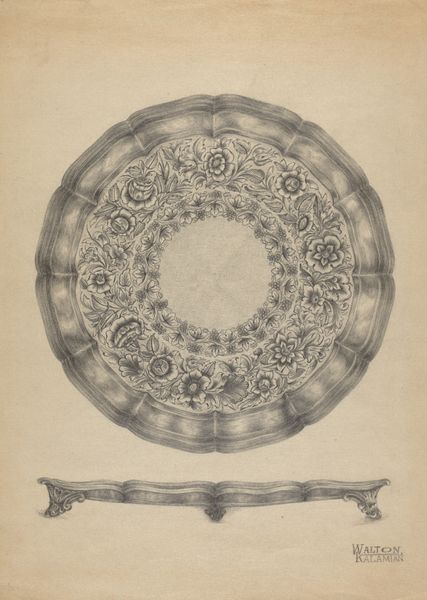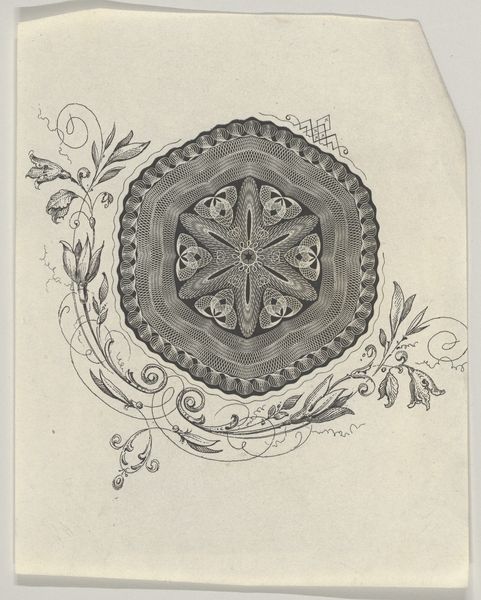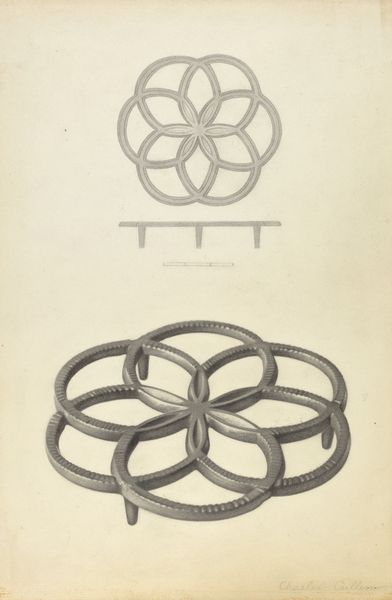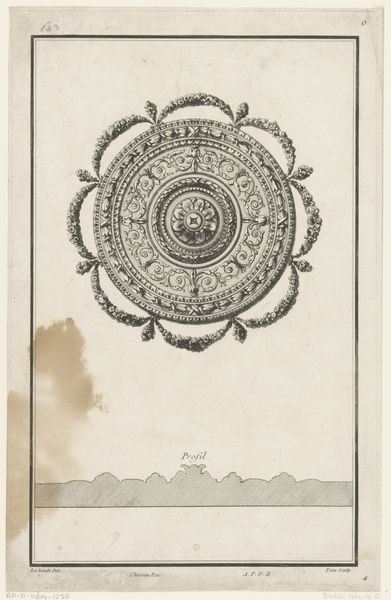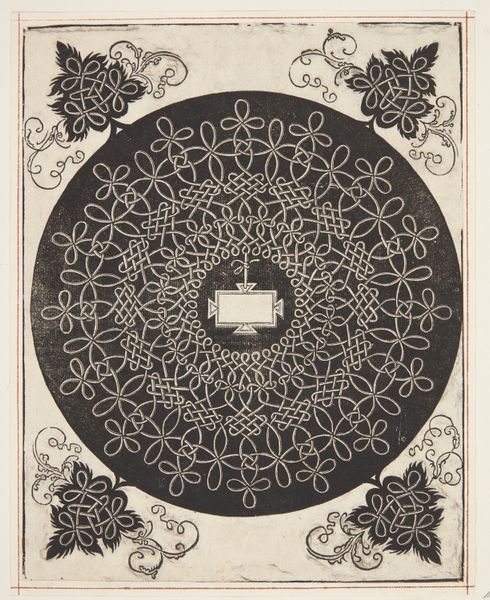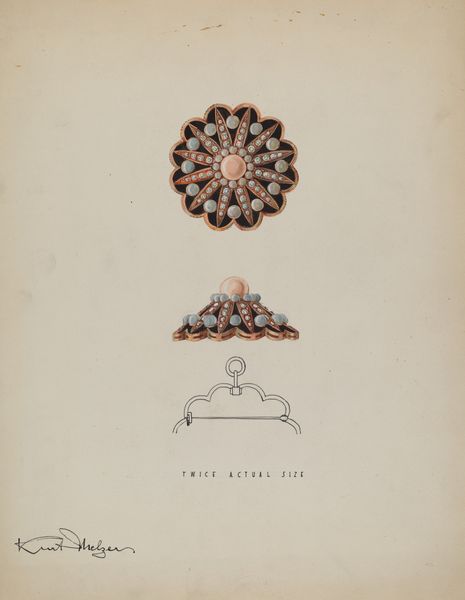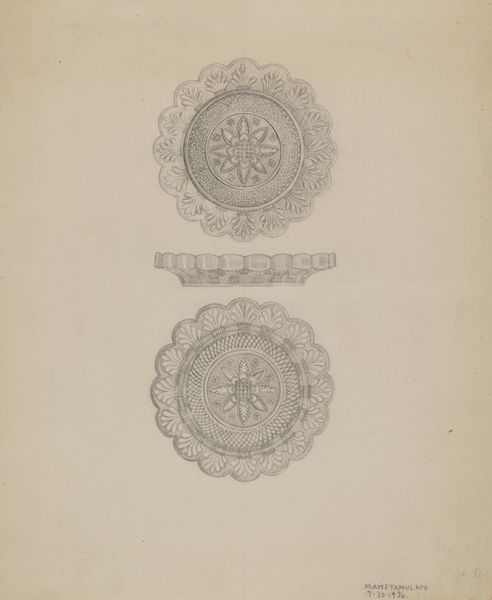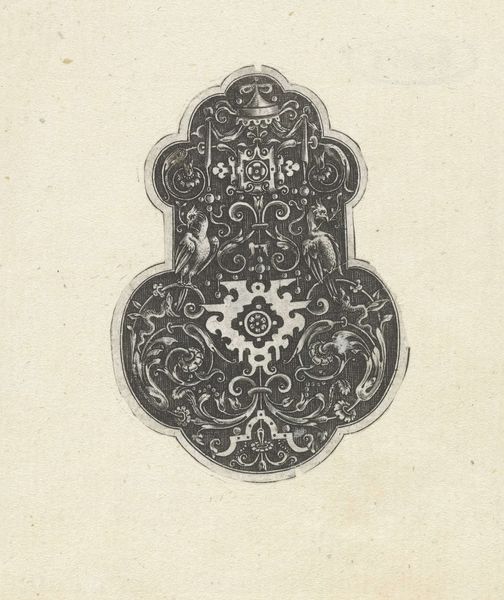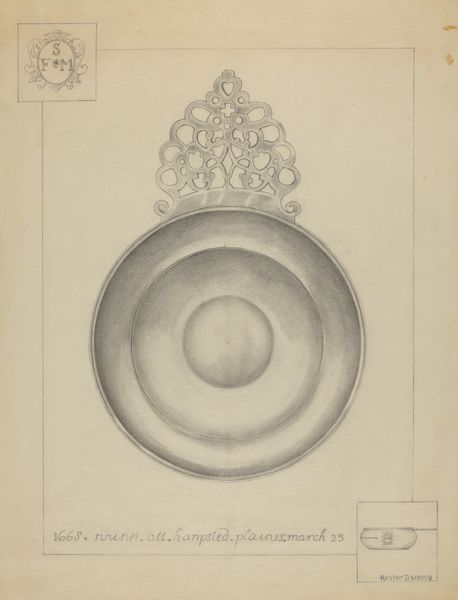
drawing, pencil
#
pencil drawn
#
drawing
#
pencil
#
realism
Dimensions: overall: 35.7 x 27.8 cm (14 1/16 x 10 15/16 in.) Original IAD Object: 4 3/4" in diameter; 1/2" high
Copyright: National Gallery of Art: CC0 1.0
Curator: Here we have Helen Hobart’s drawing "Trivet," created circa 1940 using pencil. It meticulously depicts the utilitarian object after which it is named. Editor: There’s a satisfying solidity to this piece, even as a drawing. I feel the weight of the metal, and admire its intricate, almost gothic design. You can see its intended function while appreciating the detail of each junction and point of support. Curator: The trivet itself is a potent symbol of domestic life. Circles are often linked to ideas of wholeness and completion. This object, designed for the heat and work of the kitchen, brings those symbolic meanings into the daily lives of women—traditionally associated with that domain. Editor: Precisely. And this realist rendering raises the question: Why choose this object, and how might Hobart have encountered it? We can think about material accessibility in the 1940s, the cost of labor versus manufactured goods, even what metals were available during wartime. Curator: Indeed. Perhaps it reflects a longing for a return to simplicity in the face of conflict. The repeating quatrefoil pattern also evokes connections to faith and heritage, suggesting something lasting amid the changes of the era. Editor: Or it could just be that a detailed depiction offered aesthetic satisfaction. The use of pencil seems perfectly suited, capturing the nuances of shadow and light across the object's surface, yet the drawing seems unconcerned about revealing any underlying narrative meaning beyond form and finish. Curator: The power of objects lies, in part, in their ability to trigger varied associations depending on who's beholding them. Even mundane articles bear multiple cultural messages, consciously perceived or otherwise. Editor: Right, and considering how a drawn version alters our perception is intriguing. A mass produced item made unique by the act of observation, elevating utility into art through careful draftsmanship. It makes us think about where beauty can be found. Curator: Absolutely. The symbolism exists in harmony with the execution, resulting in a meditation on heritage and functionality, memory and intention, domesticity and devotion. Editor: Yes, seeing this trivet reimagined allows a quiet contemplation about purpose, materiality, and art’s ability to transform the mundane into something captivating.
Comments
No comments
Be the first to comment and join the conversation on the ultimate creative platform.
